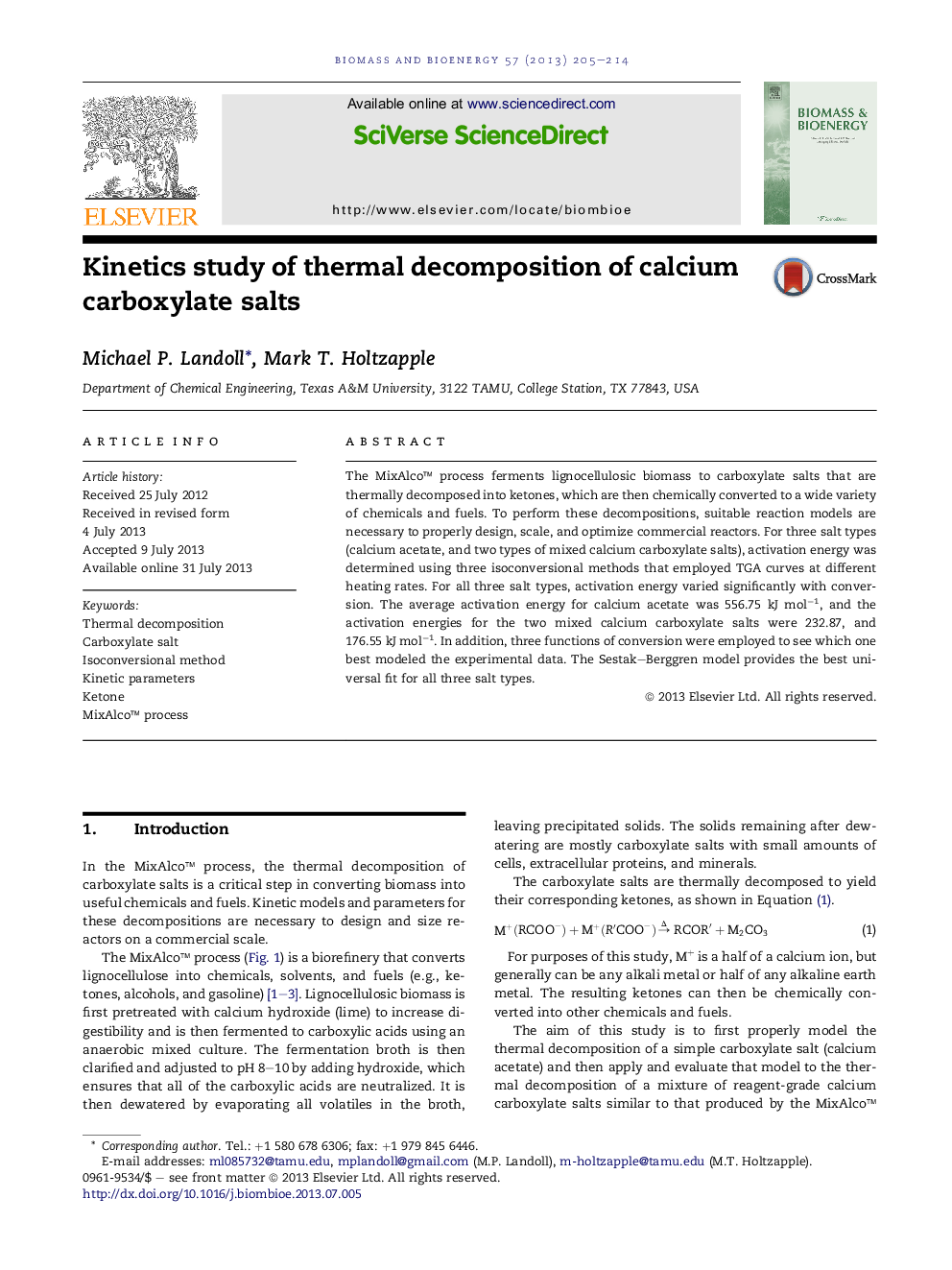| کد مقاله | کد نشریه | سال انتشار | مقاله انگلیسی | نسخه تمام متن |
|---|---|---|---|---|
| 676993 | 1459836 | 2013 | 10 صفحه PDF | دانلود رایگان |

• Calcium carboxylate salts from fermentation broth thermally decompose to ketones.
• Activation energy varies with conversion for all three salt types.
• Sestak–Berggren model provides best fit overall for all three salt types.
The MixAlco™ process ferments lignocellulosic biomass to carboxylate salts that are thermally decomposed into ketones, which are then chemically converted to a wide variety of chemicals and fuels. To perform these decompositions, suitable reaction models are necessary to properly design, scale, and optimize commercial reactors. For three salt types (calcium acetate, and two types of mixed calcium carboxylate salts), activation energy was determined using three isoconversional methods that employed TGA curves at different heating rates. For all three salt types, activation energy varied significantly with conversion. The average activation energy for calcium acetate was 556.75 kJ mol−1, and the activation energies for the two mixed calcium carboxylate salts were 232.87, and 176.55 kJ mol−1. In addition, three functions of conversion were employed to see which one best modeled the experimental data. The Sestak–Berggren model provides the best universal fit for all three salt types.
Journal: Biomass and Bioenergy - Volume 57, October 2013, Pages 205–214